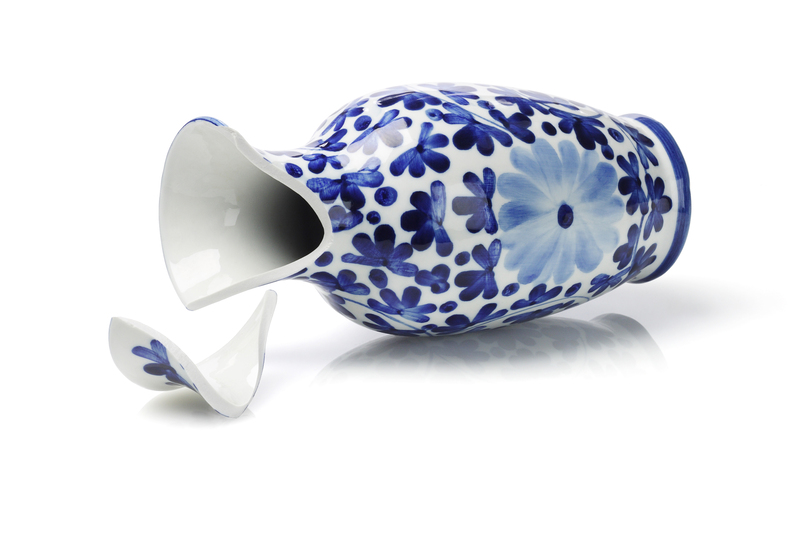Preserve Your Freezer's Functionality with Proper Storage Methods
Posted on 16/06/2025
Preserve Your Freezer's Functionality with Proper Storage Methods
Your freezer is a critical ally in food preservation, meal planning, and household management. To maintain its efficiency, longevity, and food safety, implementing proper storage methods is essential. This comprehensive guide will help you understand the best techniques and expert tips to ensure your freezer remains in optimal working condition, allowing your frozen goods to stay fresh, delicious, and free from waste.
Why Proper Freezer Storage is Crucial
Before diving into various storage methods, it's important to grasp why maintaining your freezer with the right strategies matters:
- Extends Appliance Life: When your freezer isn't overloaded or organized poorly, it works less to keep items frozen, promoting longevity.
- Saves Energy: Organized and correctly packed freezers reduce power consumption by allowing cold air to circulate freely.
- Prevents Food Waste: Proper storage prevents forgotten items from succumbing to freezer burn or spoilage, saving you money and resources.
- Improves Food Quality and Safety: Keeping frozen food at the right temperature in suitable containers keeps taste and nutritional value intact.
With these benefits in mind, let's explore the best freezer storage practices that will help you preserve both your appliance and your food investment.

Optimal Temperature and Placement for Freezer Efficiency
Maintain the Right Temperature
The optimal freezer temperature for food safety and preservation is 0?F (-18?C) or lower. Anything higher can allow bacteria to multiply, spoiling food faster.
- Use a Freezer Thermometer: Not all built-in controls are accurate. Place a thermometer inside and monitor frequently.
- Keep It Full but Not Stuffed: A full freezer retains cold better than a nearly empty one, but overpacking can block air circulation and stress the motor.
Smart Placement
Where you place your freezer impacts efficiency:
- Keep away from heat sources like stoves or direct sunlight.
- Allow adequate space around appliance for ventilation to avoid overheating.
- If your freezer is in a garage or basement, monitor for extreme temperature swings that can affect performance.
Proper Food Storage Methods to Preserve Your Freezer's Functionality
Packaging and Container Selection
Package your food with purpose:
- Use freezer-safe materials: Only bags and containers labeled "freezer-safe" prevent moisture loss and protect against freezer burn.
- Choose airtight containers or heavy-duty freezer bags for best results.
- For glass containers, ensure they're tempered for freezing to prevent cracking.
- Wrap meats and baked goods in plastic wrap first, then in aluminum foil to provide an extra barrier against air exposure.
Labeling and Dating
Always label every item with the contents and date of freezing. This prevents mystery meals and helps you use food in the right order to avoid spoilage.
Portioning for Convenience
Divide large packages into single-use or meal-size portions. This not only makes thawing easier but also minimizes repeated temperature fluctuations from opening and closing containers.
Organizing by Food Type and Use-by Dates
- Place newer items behind or underneath older items (first-in, first-out method).
- Group similar foods together – meats, vegetables, fruits, baked goods – for quick access and reduced door-open time.
- List an inventory of contents on the freezer door to minimize the time spent searching inside.
Avoiding Freezer Burn and Spoilage
Understanding Freezer Burn
Freezer burn is caused by air exposure, leading to dehydration and dull, off-tasting food. While not dangerous, it ruins both flavor and texture.
How to Prevent Freezer Burn
- Use airtight packaging: Remove as much air as possible before sealing bags or containers.
- Double wrap delicate items such as bread, cake, or raw meat for extra protection.
- Cool hot foods to room temperature before freezing to prevent condensation and frost build-up.
Smart Freezer Organization Tips to Save Time and Money
Maximize Space With Smart Arrangement
- Use stackable or modular containers to reduce wasted space.
- Slim bags for soups and stews can be frozen flat, then stacked upright "like files" once solid.
- Freeze leftovers in muffin tins, then transfer frozen "pucks" to labeled bags for single-serve meals.
- Place frequently used items in easy-to-reach areas and less-used items toward the back or bottom.
Prevent Overcrowding
Don't cram your freezer full – air circulation is vital for even temperature and minimizing frost. Leave a little room between items if possible.
Rotate and Audit Regularly
- Schedule a monthly check of your freezer contents for expired or freezer-burned food.
- Rearrange to bring older items to the front to ensure they're used promptly.
- Update your contents inventory with each addition or removal.
Safe Thawing and Refreezing Practices
Best Methods for Thawing Frozen Foods
- Thaw in the refrigerator: The safest method, though slowest. Keeps food at a safe temperature during the process.
- For quicker results, thaw in a sealed bag under cold running water.
- Never thaw at room temperature, as this promotes bacteria growth on the outer layers.
Guidelines for Refreezing
Food that has been thawed in the refrigerator can generally be safely refrozen, although there may be some loss of quality. Avoid refreezing food that has been thawed at room temperature or in warm environments.
Preventing Ice Build-Up and Frost
Why Frost Builds Up
Every time the freezer is opened, warm moist air enters, condenses, and freezes, resulting in frost build-up. Over time, this reduces storage space and freezer efficiency.
How to Minimize Frost
- Open freezer doors only as needed and close them firmly.
- Check and replace rubber door gaskets if they're cracked or don't seal well.
- Don't overload the freezer, which forces the door to remain open longer during rearrangement.
- If your freezer isn't frost-free, defrost according to the manufacturer's schedule or when frost build-up exceeds a quarter-inch.
Freezer Maintenance for Lasting Performance
Checklist for Freezer Care
- Keep coils free of dust and debris to enhance efficiency (unplug before cleaning).
- Verify that the door seals tightly by placing a dollar bill in the door; if you can pull it out easily, the gasket may need replacing.
- Wipe up spills or crumbs regularly to prevent odors and mold.
- Run an annual full clean-out: empty contents, allow ice to melt, then clean interior with baking soda solution.
Signs Your Freezer Needs Attention
- Excessive frost build-up that won't go away after defrosting.
- Unusual noises, indicating the motor is straining.
- Fluctuating interior temperatures or items freezing unevenly.
- Persistent bad odors even after cleaning.
If you notice these issues, it's time for maintenance or a service call before a breakdown threatens your food supply.

FAQs: Freezer Storage and Functionality
How long can different foods be stored in the freezer?
- Meat: 4-12 months depending on type and cut.
- Poultry: Up to 12 months for whole, 9 months for pieces.
- Vegetables and Fruits: 8-12 months for optimal quality.
- Baked Goods: 2-6 months depending on the item.
Always check for signs of spoilage or freezer burn before consuming.
What's the best way to organize a chest freezer?
Use sturdy bins or baskets to separate food types. Label the tops for easy identification, and keep a list of contents taped on the lid. Rotate items regularly to ensure nothing gets lost at the bottom.
Can I freeze food in its original packaging?
Store-bought foods are often packaged for short-term, not long-term, freezing. Transfer to airtight freezer bags or wrap with foil for added protection.
What should I do if my freezer loses power?
Keep the door closed as much as possible. A full freezer can keep food safe for about 48 hours (24 if half-full). After power is restored, check for ice crystals or a temperature of 40?F (4?C) or below before refreezing or cooking.
Conclusion: Ensure Your Freezer's Longevity with Proper Storage
By following these expert tips and methods, you'll preserve your freezer's functionality and extend both its lifespan and the viability of your foods. It's not just about packing items in; it's about smart selection, organization, temperature control, and routine maintenance. With the proper practices, your freezer will serve you well, keep your food safe, and cut down on costs and waste for years to come.
Start applying these freezer storage tips today, and enjoy the rewards of an efficient, organized, and long-lasting appliance in your home.


